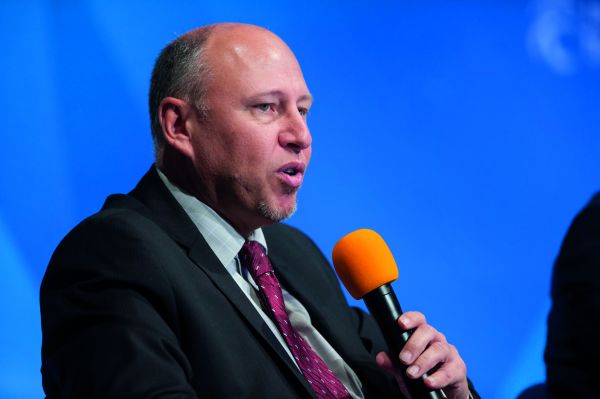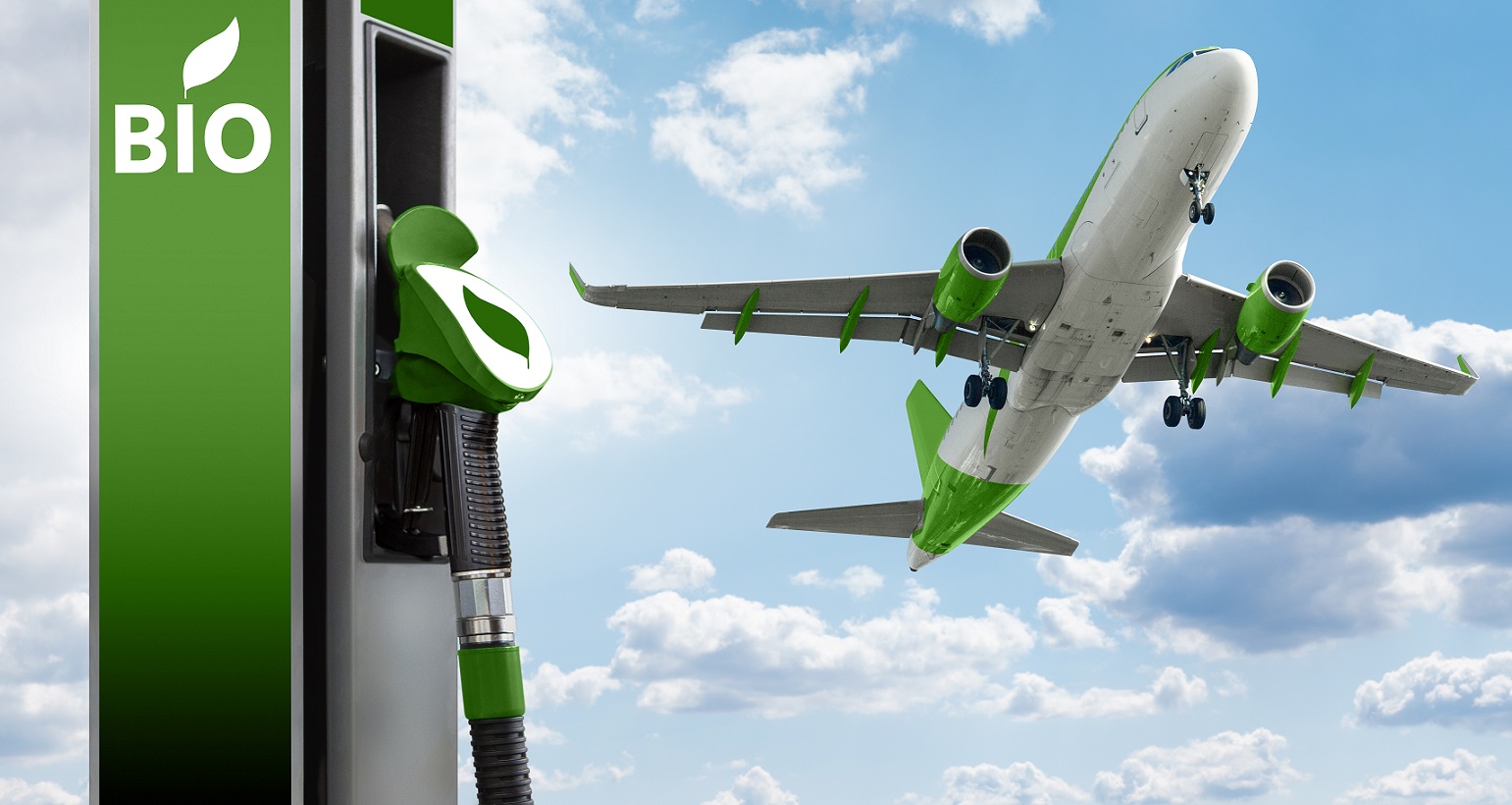TIACA tackles people and pollution
06 / 03 / 2023

Glyn Hughes
Trade organisation TIACA is hoping to take a lead when it comes to reducing the emissions generated by air cargo and attracting the next generation of employees.
Sustainability is a delicate balancing act for the air cargo industry: maintaining global supply chains while cutting carbon emissions to meet aviation’s net zero target by 2050.
Recruitment is another challenge: how do you encourage young people to look beyond the airports, trucks and warehouses, to see instead a global industry encouraging innovative thinking to eliminate problems and create wealth for developing countries?
For Glyn Hughes of TIACA, a body representing all the players in airfreight supply chain, sustainability is defined by the United Nations concept of people, planet and global prosperity.
“Sustainability is more than just the environmental aspect, and at TIACA we align our definition along the United Nations sustainable development goals which is looking at people, planet and global prosperity.”
Adds Hughes: “We want to reduce the environmental impact of transport and in doing so avoid calls for people to buy only goods that are grown or manufactured close to the point of consumption.
“The problem is that you have got hundreds of millions of people around the world in developing nations who, for example, grow crops and flowers naturally under sunlight but still need to get product to markets in Western Europe, North America, and Asia.
“That is where the notion of responsible environmental impact is crucial. It is about what we can do to balance between the effect we are having on the planet but also the positive impact we are having on global society.”
There is a lot of noise around sustainable aviation fuel (SAF) as a cleaner energy source, with hydrogen and electric power as even greener alternatives in the future, but can the aviation industry really achieve Net Zero by 2050?
The answer from Hughes is unequivocal: “Yes we can,” adding: “If you look at the way that target is going to be achieved there are four key components.”
Current thinking is that 65% of the 2050 target is based on SAF, with a further 13% from electrification of aircraft and hydrogen fuel or from other future technologies.
An additional 3% of carbon savings will come from infrastructure and operational efficiencies such as ‘perfect descent’ landings, with integrated airspace avoiding wasteful circling above airports.
Offsetting emissions
The last component is a catch-all, to include offsetting and carbon capture. Offsetting is best avoided longer term, says Hughes, because: “That is really saying we did not achieve what we wanted to, and another industry has done a great job.”
But the creation of an offsetting third-party market would allow airports, with solar panels in their real estate to play an important role, such as Edmonton in Canada with a 120 Megawatt solar farm that produces more energy than it needs and can flow the excess into the national grid.
Hughes is aware of the challenges in producing SAF at the quantities required.
“In 2022, about 200m litres of SAF was produced and since 2016 more than 300,000 flights have had a component of SAF, which is a significant amount. But the scale going forward is 30bn litres of SAF by 2035, as an interim target, and 450bn litres by 2050.”
The target SAF production capacity for aviation will require governments and private investors to work collaboratively in a public-private partnership approach.
Some air cargo industry figures think that the SAF production target is impossible to achieve due to infrastructure constraints.
Hughes says: “I don’t think we should ever use the word impossible for a target that has still got three decades left to achieve it. SAF is chemically similar to today’s aviation fuel and is a drop-in product that uses existing fuel farms and pipework at airports.
“Just look at what has been achieved in the last few years because of Covid. Four years ago, people would have said you cannot carry cargo on a passenger aircraft without any seats, but the industry did it.”

Photo: Shutterstock
Hughes knows that hydrogen, “the greenest of all fuels” because it does not add CO2 to the atmosphere, is more problematic to produce and use.
“Liquid nitrogen needs to be stored at -250°C, which is its boiling point, so you would require an entirely new infrastructure”, plus you would need available supplies at both flight origin and destination, creating expensive dual fuel systems at airports and for aircraft.
But hydrogen is a more practical energy source for ground equipment and other vehicles at airports: “I think there is a role for hydrogen, but probably not a significant one, even though Airbus plans to have a hydrogen-operating aircraft by 2035.
“At this stage, nobody wants to say no to a particular technological investment or innovation, but we have to look at the practicalities about storage and infrastructure.
“The industry can be quite innovative, and no one solution will address all these challenges. It will require a multitude of solutions.”
TIACA represents the entire air cargo supply chain while IATA represents passenger and cargo airlines, although both associations have input to ICAO, the United Nations agency dealing with aviation matters.
There is one area where TIACA and IATA take a different view on sustainability at an operational level, and that is how to calculate CO2 emissions for passengers and cargo.
Hughes says: “Every kilo of cargo increases the amount of fuel that is burnt, therefore airfreight needs to play its part.
“But IATA’s recommended practice for determining the weight to be used for the passenger versus cargo makes it optional to include the weight of the passenger seat and the empty seats, therefore putting a disproportionally lower weight calculation on passenger emissions which means cargo has a larger amount of the fuel burn allocated to it.”
Hughes says that some major freight forwarders now have challenges in the CO2 emissions calculations presented to shipper customers for their shipments.
“The shipments on a freighter have X amount of CO2 emissions, but the calculations in the belly of a passenger aircraft could be twice as high, just because of the way that the fuel burn was allocated on those aircraft.
“Forwarders are concerned that shippers, in terms of their environmental good stewardship, would rather focus on using freighters and not bellyhold capacity, which is a critical issue for this industry.
“We need bellies to be full of cargo, to support the freighter network, and we need passenger bellyholds for off-line points that freighters don’t go to. We also need bellyhold freight for route economics as cargo’s contribution is crucial.”
At the time of the interview, TIACA was drafting a letter to IATA, calling for all parties in the aviation industry to meet and find an equitable balance between cargo and passenger when calculating emissions.
People power
Another urgent concern is recruiting young people into logistics. Equally radical changes are necessary, contends Hughes, in how the logistics industry recruits and retains young people into a dynamic industry that has an image problem, in seeming dull.
“We have to throw away everything we thought we knew about recruitment. We must change how we train people, how we recruit people, on-board them, change the workplace we create for them and how they develop their careers. We should look at sabbaticals, gamification, and at social community development. It all comes back to how we demonstrate value.”
Hughes, like many senior figures in the air cargo industry, entered straight from school and has stayed in it for more than 30 years.
“We have to recognise that the workforce of our generation was predominately based around: I need to provide, I need a job and I need to work hard, and I cannot really complain too much. That was how I was brought up and I ended up working for 30 years in IATA.”

Source: Shutterstock
Hughes, who joined TIACA two years ago, believes it “unthinkable” that young people today would consider working in the same organisation or industry for 30 years.
“Young people now want to move across industries every few years, so we have to recognise that this next generation and subsequent generations are completely different from how we operated.”
But that desire for constant change, challenging traditional norms and a desire to experience new things may see logistics and airfreight tick all the career boxes for young people entering the world of work.
Hughes says: “That is quite exciting because our industry has a better value proposition than almost any other out there. Think about what we did during Covid as a collective.
“Not only did this industry save people’s lives but it also enabled goods to continue moving around the world and is now helping developing nations by delivering aid. Airfreight is protecting the world, feeding the world, maintaining the world and clothing the world.
“We need to take those stories of value creation, our positive impact on society, and get them out to the next generation.”
The idea that an airfreight worker needs 15 years under their belt before they can engage with senior industry figures also needs to be abandoned, says Hughes.
“It is almost the opposite now, we need to take these energetic young people coming into our industry with great new ideas and send them overseas to experience first-hand how to build relationships, open new branches and help local communities.”
The kids are alright
He believes that the logistics industry must go in at university level, technical college and schools to educate on global economics and the importance of supply chains.
Hughes points to a UK recruitment programme, Generation Logistics, partly funded by the government and private companies, which uses modern communication tools, such as TikTok, Instagram and influencers, plus workshops and a jobs section on its website.
“In the UK some 30% to 40% of trade goes by air but 100% moves within the logistics system. It is across the board, and we will need to employ drivers and warehouse staff, salespeople, innovators, managers, sustainable champions and network builders.
TIACA is looking at Generation Logistics as a template for other countries across the globe.
The ambassadors for attracting the next generation to airfreight and logistics will not be today’s senior industry figures, contends Hughes.
“It would be like having a father or grandfather talking to them. We should put a 21-year-old in front of them, talking about how they have been able to go overseas, helping a small village in India with its textiles to create a website that enables them to sell T-shirts all over the world.
“Those kids in the audience are going to be blown away by the opportunity, and that is what we must do, we have got to create and inspire that next-generation.”
It is not just the next generation but also the return to workers or those changing career that present a pool of available talent and work experience: “They need to see the value that this industry brings and how they can contribute too.”
Hughes also wants to ban the phrase “we have to do it this way because that is how we have always done it”.
He adds: “Logistics problems are very different today from those in the past, so we need to create an environment where the next generation are comfortable in trying out new solutions.”
Call for insurance market to relax Syria rules for aid flights














